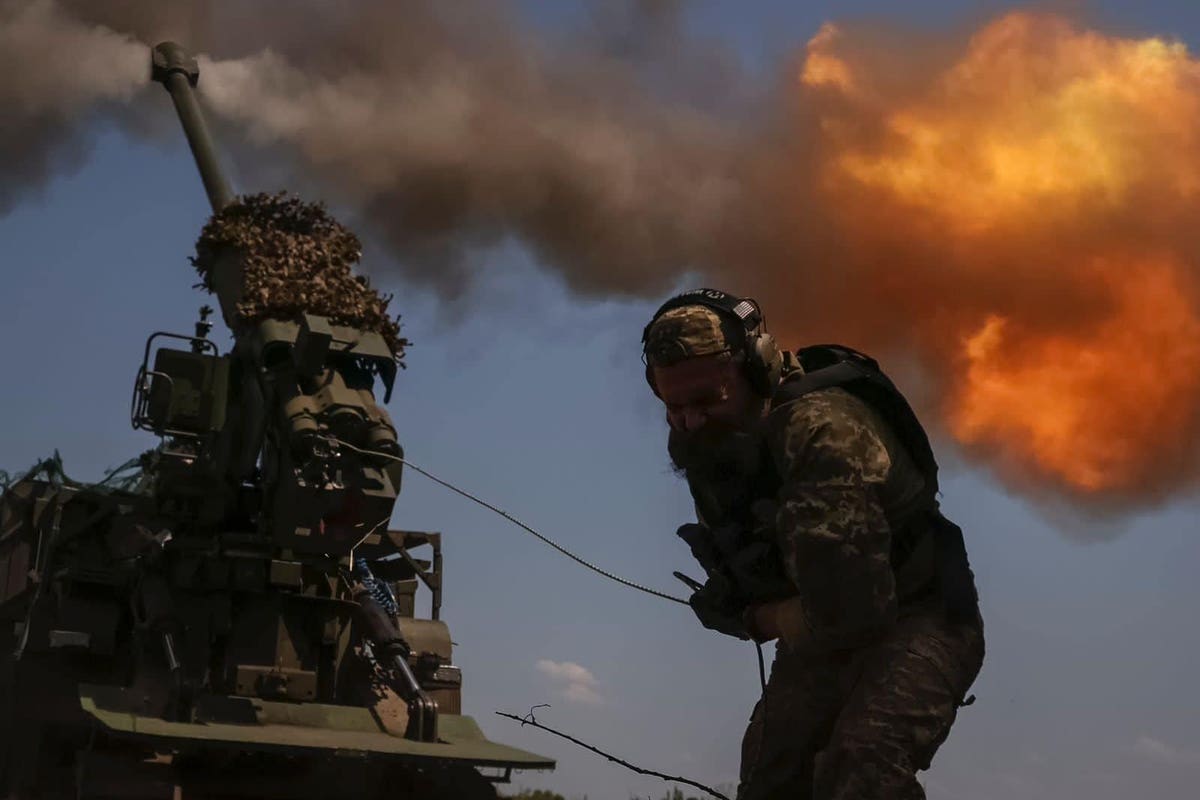Seventeen months into Russia’s wider war on Ukraine, and a month into Ukraine’s long-anticipated southern counteroffensive, Ukrainian forces are winning a key battle—the counterbattery battle.
That is, the artillery-on-artillery fight that often determines which army prevails on a battlefield.
Steep and nearly equal losses in tanks and fighting vehicles on both sides, nearly five weeks into Ukraine’s counterattacks along several axes in southern and eastern Ukraine, obscure the imbalance in artillery losses.
In Zaporizhzhia and southern Donetsk Oblasts, both Ukrainian and Russian forces have written off more than 150 vehicles that outside analysts can confirm.
Ukrainian losses are slightly higher at around 170, which should come as no surprise. A defending army enjoys an advantage over an attacking army, as the former can dig in while the latter often must advance across open terrain.
Artillery losses have not been equal. Observers have counted 32 wrecked howitzers and rocket-launchers on the Russian side, but only eight on the Ukrainian side. It seems the Russians are losing four big guns for every one big gun the Ukrainians are losing.
Scale and context matter. Having begun the wider war with around 5,000 howitzers and rocket-launchers—three times what the Ukrainians had—the Russians had more artillery to lose.
But the Kremlin’s artillery advantage eroded over 17 months of hard fighting, as Kyiv’s forces destroyed 600 Russian guns and launchers and Moscow’s forces in turn destroyed just 200 Ukrainian guns and launchers.
That’s a three-to-one loss ratio in Ukraine’s favor. It’s worth noting that the Ukrainians more than have made good their losses by acquiring, from their foreign allies, more than a thousand howitzers and rocket-launchers. Both sides of course also have dragged hundreds of older guns and launchers out of long-term storage.
All that is to say that, on June 4—the first day of Ukraine’s counteroffensive—Kyiv on paper had no fewer than 2,500 big guns and launchers. Moscow had around 4,500. And over the following weeks, the Ukrainians steadily chipped away at this advantage by destroying four times as many Russian howitzers and launchers as the Russians have destroyed Ukrainian howitzers and launchers.
Counterbattery is the practice of firing artillery at the enemy’s own artillery in order to prevent the enemy from bringing to bear their most potent firepower. The army that wins the counterbattery fight in a particular battle more often than not wins that battle. Which is why Ukraine’s steady destruction of Russian howitzers and launchers is so encouraging to proponents of a free Ukraine.
Why the Ukrainians gradually are winning the counterbattery fight should be obvious. Huge consignments of Western-made systems—which often are more reliable, more accurate and farther-firing than Soviet-style systems are—radically have improved Ukraine’s 13 artillery and rocket brigades.
Perhaps most importantly, the Ukrainians have received from Germany, Norway, the United Kingdom and the United States scores of counterbattery radars that spot incoming artillery shells and rockets, pinpoint the source and cue friendly howitzers and launchers to fire back.
The radars, working in conjunction with small drones, make it very dangerous for Russian gunners to do their work. They have to shoot then scoot—fast—to have any chance of surviving Ukrainian counterbattery fire.
The Russians have their own radars and drones, too, of course—but they obviously are less effective.
The Russian army began the wider war with the superior artillery fire-control system. A year later, the advantage had flipped to the Ukrainian army. It should have been obvious, as early as this spring, that the Russians were in trouble. In mid-April, Ukraine’s southern command reported “impressive results” in its effort to clear—through counterbattery fire—Russian artillery from the left bank of the Dnipro River.
The same command now oversees the main axes of the southern counteroffensive. The same axes where the Russians now are losing four times as many artillery pieces as the Ukrainians are.
Read the full article here





